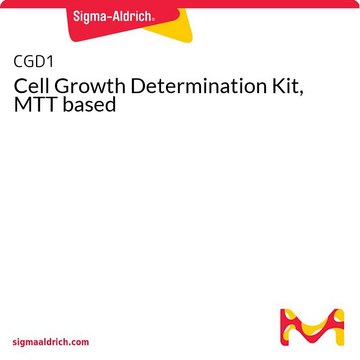1.00326
Hydrogen chloride solution
c(HCl) = 0.1 mol/l (0.1 N) in 2-propanol, DIN ISO 6618, for titration in non-aquous media, Titriplex®
Sinonimo/i:
Hydrogen chloride solution
About This Item
Prodotti consigliati
Nome del prodotto
Hydrogen chloride solution, 0.1M in 2-propanol, acc. to DIN ISO 6618 part 1 c(HCl) = 0.1 mol/l (0,1 N), Titripur®
Livello qualitativo
Nome Commerciale
Titripur®
Stato
liquid
Temp. autoaccensione
425 °C (2-Propanol)
Qualità
Analyzed in our ISO 17025 accredited QC lab
Limite di esplosione
2-13.4 % (v/v) 2-Propanol)
Impiego in reazioni chimiche
reaction type: Acid-base reactions
Concentrazione
0.1 M
tecniche
titration: suitable
pH
<0.5 (20 °C in H2O)
Temp. transizione
flash point 12 °C (2-Propanol)
Densità
0.79 g/cm3 at 20 °C
Temperatura di conservazione
15-25°C
Applicazioni
- A highly selective electrochemical sensor for chloramphenicol based on three-dimensional reduced graphene oxide architectures.: This study presents the development of an electrochemical sensor for detecting chloramphenicol in aqueous solutions, leveraging the properties of reduced graphene oxide. Hydrogen chloride solution plays a critical role in the preparation of the graphene oxide, which is instrumental for the sensor′s high sensitivity and selectivity (Zhang et al., 2016).
- Effects of cross-linking molecular weights in a hyaluronic acid-poly(ethylene oxide) hydrogel network on its properties.: This research explores the impact of cross-linking with varying molecular weights on the properties of a hyaluronic acid-polyethylene oxide hydrogel. The use of hydrogen chloride solution in modifying the hydrogel structure is essential for optimizing its physical characteristics for potential analytical chemistry applications (Noh et al., 2006).
- [Determination of docosahexenoic acid in human serum by capillary gas chromatography].: This paper discusses a method for the determination of docosahexenoic acid in human serum using capillary gas chromatography, where hydrogen chloride solution is used during the esterification process of fatty acids, demonstrating its utility in enhancing the precision of analytical techniques (Li et al., 1997, article in Chinese).
Caratteristiche e vantaggi
This volumetric solution is analyzed by our calibration laboratory D-K-15185-01-00 which is accredited according to DIN EN ISO/IEC 17025 for analysis of amount-of-substance concentrations in volumetric solutions by DAkkS (Deutsche Akkreditierungsstelle - German National Accreditation Body). The accreditation certificate can be found at www.sigmaaldrich.com/ISO17025.
Confezionamento
Risultati analitici
Amount-of-substance concentration 0.0994 - 1.006 mol/L
Measurement uncertainty ± 0.0004 mol/L
Traceability NIST SRM
The concentration is determined by volumetric titration and refers to 20°C.
The amount-of-substance concentration of this volumetric solution is determined with standardized sodium hydroxide solution (article number 1.09141). The sodium hydroxide solution is standardized by hydrogen chloride solution (article number 1.09060) which has been standardized against volumetric standard Tris(hydroxymethyl)aminomethane (article number 1.02408).
This volumetric solution is traceable to a primary standard reference material (SRM) from the National Institute of Standards and Technology, Gaithersburg, USA (NIST SRM 723 Tris(hydroxymethyl)aminomethane) by means of volumetric standard Tris(hydroxymethyl)aminomethane (article number 1.02408), certified reference material according to ISO 17034, analyzed by our accredited calibration laboratory of Merck KGaA, Darmstadt, Germany according to DIN EN ISO/IEC 17025. The uncertainty is expressed as expanded measurement uncertainty with a coverage factor k=2 covering a confidence level of 95%.
Note: The titer is a correction factor to correct for variations of the volumetric solution, the titration equipment, the temperature and other laboratory conditions. For correct titration results it is recommended to determine a titer with the laboratory specific equipment and under laboratory specific conditions directly after opening a new bottle and at regular time intervals.
Note legali
Prodotti correlati
Avvertenze
Danger
Indicazioni di pericolo
Consigli di prudenza
Classi di pericolo
Eye Irrit. 2 - Flam. Liq. 2 - Met. Corr. 1 - STOT SE 3
Organi bersaglio
Central nervous system
Codice della classe di stoccaggio
3 - Flammable liquids
Classe di pericolosità dell'acqua (WGK)
WGK 1
Punto d’infiammabilità (°F)
53.6 °F - (2-Propanol)
Punto d’infiammabilità (°C)
12 °C - (2-Propanol)
Certificati d'analisi (COA)
Cerca il Certificati d'analisi (COA) digitando il numero di lotto/batch corrispondente. I numeri di lotto o di batch sono stampati sull'etichetta dei prodotti dopo la parola ‘Lotto’ o ‘Batch’.
Possiedi già questo prodotto?
I documenti relativi ai prodotti acquistati recentemente sono disponibili nell’Archivio dei documenti.
I clienti hanno visto anche
Articoli
SmartChemicals enable wireless transfer of CoA data stored on an RFID tag on the consumable bottle to the titrator, reducing effort and chance for human error. Crucial data required for the application is transmitted safely, reliably and intelligently to the instrument.
Il team dei nostri ricercatori vanta grande esperienza in tutte le aree della ricerca quali Life Science, scienza dei materiali, sintesi chimica, cromatografia, discipline analitiche, ecc..
Contatta l'Assistenza Tecnica.






